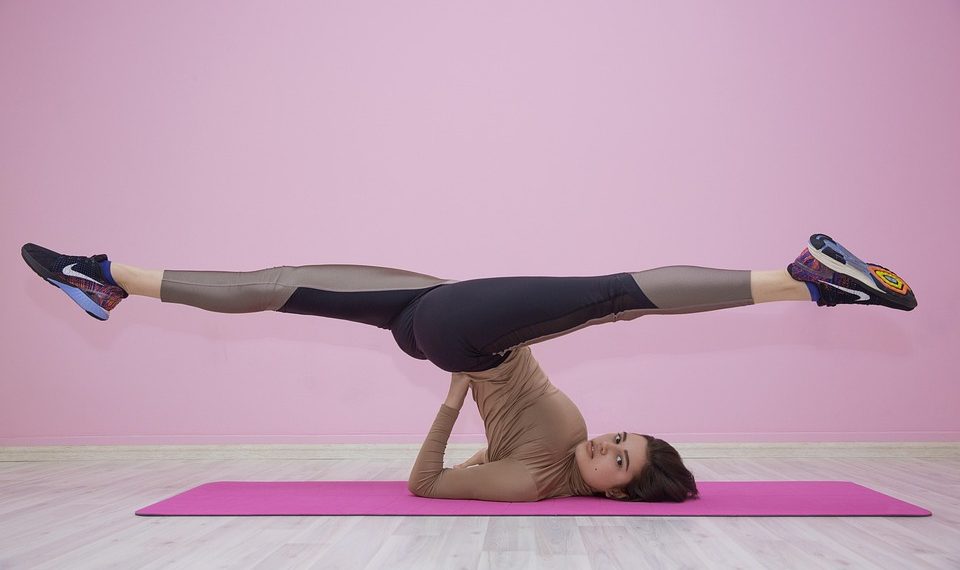Did you know that a lack of joint flexibility can not only hinder your physical activities but also lead to discomfort and pain in your daily life? If you’ve ever felt stiff after a long day at your desk or struggled to reach for that box on the top shelf, you’re not alone. Joint flexibility is crucial for maintaining a healthy lifestyle, and yoga can be a game-changer. In this article, we’ll explore five yoga poses that can help you boost your joint flexibility quickly, making everyday movements smoother and more enjoyable.
Contents
Why Joint Flexibility Matters
First off, let’s chat about why joint flexibility is so important. Flexible joints allow for a broader range of motion, which can improve athletic performance, reduce the risk of injuries, and even alleviate chronic pain. According to a study published in the Journal of Physical Therapy Science, regular stretching and flexibility exercises can significantly enhance joint mobility and overall physical function (Matsumoto et al., 2015).
So, if you’re looking to enhance your flexibility, yoga is a fantastic option. It combines stretching with strength training, which can be particularly effective for increasing joint range of motion. Plus, it’s accessible to people of all fitness levels.
1. Downward-Facing Dog (Adho Mukha Svanasana)
How to Do It:
- Start on your hands and knees in a tabletop position.
- Spread your fingers wide and tuck your toes under.
- Exhale as you lift your hips up and back, straightening your legs and forming an inverted V-shape.
- Keep your head between your arms, and aim to bring your heels toward the floor.
Benefits:
This pose stretches the shoulders, hamstrings, calves, and spine, promoting flexibility in multiple joints at once. It’s also a great way to relieve tension in your back.
Caveats:
If you have wrist issues, you may want to modify this pose by placing your forearms on the ground instead. Listen to your body and adjust as needed.
2. Cat-Cow Stretch (Marjaryasana-Bitilasana)
How to Do It:
- Start in a tabletop position on your hands and knees.
- Inhale as you arch your back (Cow), lifting your head and tailbone toward the sky.
- Exhale as you round your spine (Cat), tucking your chin and tailbone.
- Repeat for several rounds, synchronizing your breath with your movements.
Benefits:
This dynamic movement increases flexibility in the spine and shoulders while also promoting mobility in the hip joints. It’s an excellent warm-up for your yoga practice or any physical activity.
Caveats:
Avoid this pose if you have a recent back injury. Always consult a healthcare provider if you’re unsure about your capabilities.
3. Pigeon Pose (Eka Pada Rajakapotasana)
How to Do It:
- Start in a tabletop position, then bring your right knee forward toward your right wrist.
- Extend your left leg back, keeping your hips square to the front of the mat.
- Lower your torso down to the ground, resting on your forearms or extending your arms in front of you.
Benefits:
Pigeon pose is fantastic for opening up the hips and improving flexibility in the hip joints. It also stretches the thighs and groin, making it a well-rounded pose for lower body flexibility.
Caveats:
If you have knee issues, approach this pose with caution. Use props like blankets or blocks to support your body and avoid straining.
4. Butterfly Pose (Baddha Konasana)
How to Do It:
- Sit on the floor with your legs extended in front of you.
- Bend your knees, bringing the soles of your feet together, and let your knees fall out to the sides.
- Hold your feet with your hands and gently press your knees toward the ground.
Benefits:
This pose stretches the hips, thighs, and groin while promoting relaxation. It’s particularly beneficial for those who sit for long periods, as it counteracts tightness in the hips.
Caveats:
If you find it difficult to sit up straight, sit on a folded blanket or cushion for added support. Listen to your body and avoid forcing your knees down.
5. Seated Forward Bend (Paschimottanasana)
How to Do It:
- Sit on the floor with your legs extended straight in front of you.
- Inhale and lengthen your spine, then exhale as you hinge at the hips to reach your hands toward your feet.
- Keep your back straight, and only go as far as feels comfortable.
Benefits:
This pose stretches the spine, hamstrings, and calves while also calming the mind. It’s a great way to enhance flexibility in the lower body and improve overall posture.
Caveats:
If you have a back injury, avoid this pose or modify it by bending your knees slightly. Always prioritize safety over depth in your stretches.
Incorporating These Poses into Your Routine
Now that you know some effective poses, how can you incorporate them into your daily routine? Here’s a simple plan:
- Morning Routine: Start your day with a few rounds of Downward-Facing Dog and Cat-Cow Stretch to wake up your body.
- Midday Break: Take a few minutes at your desk to do Butterfly Pose and Pigeon Pose to relieve tension from sitting.
- Evening Wind Down: End your day with Seated Forward Bend and a few gentle stretches to promote relaxation and flexibility.
In just a few minutes each day, you can significantly improve your joint flexibility and overall well-being.
FAQs
1. How often should I practice these poses?
Aim for at least 3-4 times a week for optimal results. Even a few minutes daily can make a difference!
2. Can yoga really help with joint pain?
Yes! Many people find that regular yoga practice helps alleviate joint pain by increasing flexibility and strengthening surrounding muscles.
3. Are there any risks associated with yoga?
Like any physical activity, there are risks if poses are performed incorrectly. Always listen to your body and consult a healthcare provider if you have concerns.
4. What if I’m not flexible?
That’s perfectly okay! Yoga is about progress, not perfection. Start at your own pace and gradually work toward deeper stretches.
Conclusion
Incorporating yoga into your routine can be a transformative experience, especially when it comes to joint flexibility. The five poses we’ve explored—Downward-Facing Dog, Cat-Cow Stretch, Pigeon Pose, Butterfly Pose, and Seated Forward Bend—can help you unlock a newfound range of motion and comfort in your everyday life.
So, why not give it a try? Your joints will thank you!
And remember, this article is for educational purposes only and is not a substitute for professional medical advice. Always consult a qualified healthcare provider before making changes to your health routine.
References
-
Matsumoto, M., & Yoshida, Y. (2015). Effects of stretching exercises on joint mobility and physical function in older adults. Journal of Physical Therapy Science, 27(4), 1097-1100. https://doi.org/10.1589/jpts.27.1097
-
Mayo Clinic. (2021). Yoga: Do you need to be flexible to practice? Retrieved from https://www.mayoclinic.org/healthy-lifestyle/fitness/in-depth/yoga/art-20045809
-
Harvard Health Publishing. (2020). The benefits of yoga. Retrieved from https://www.health.harvard.edu/exercise-and-fitness/the-benefits-of-yoga
Get Your FREE Natural Health Guide!
Subscribe now and receive our exclusive ebook packed with natural health tips, practical wellness advice, and easy lifestyle changes — delivered straight to your inbox.















